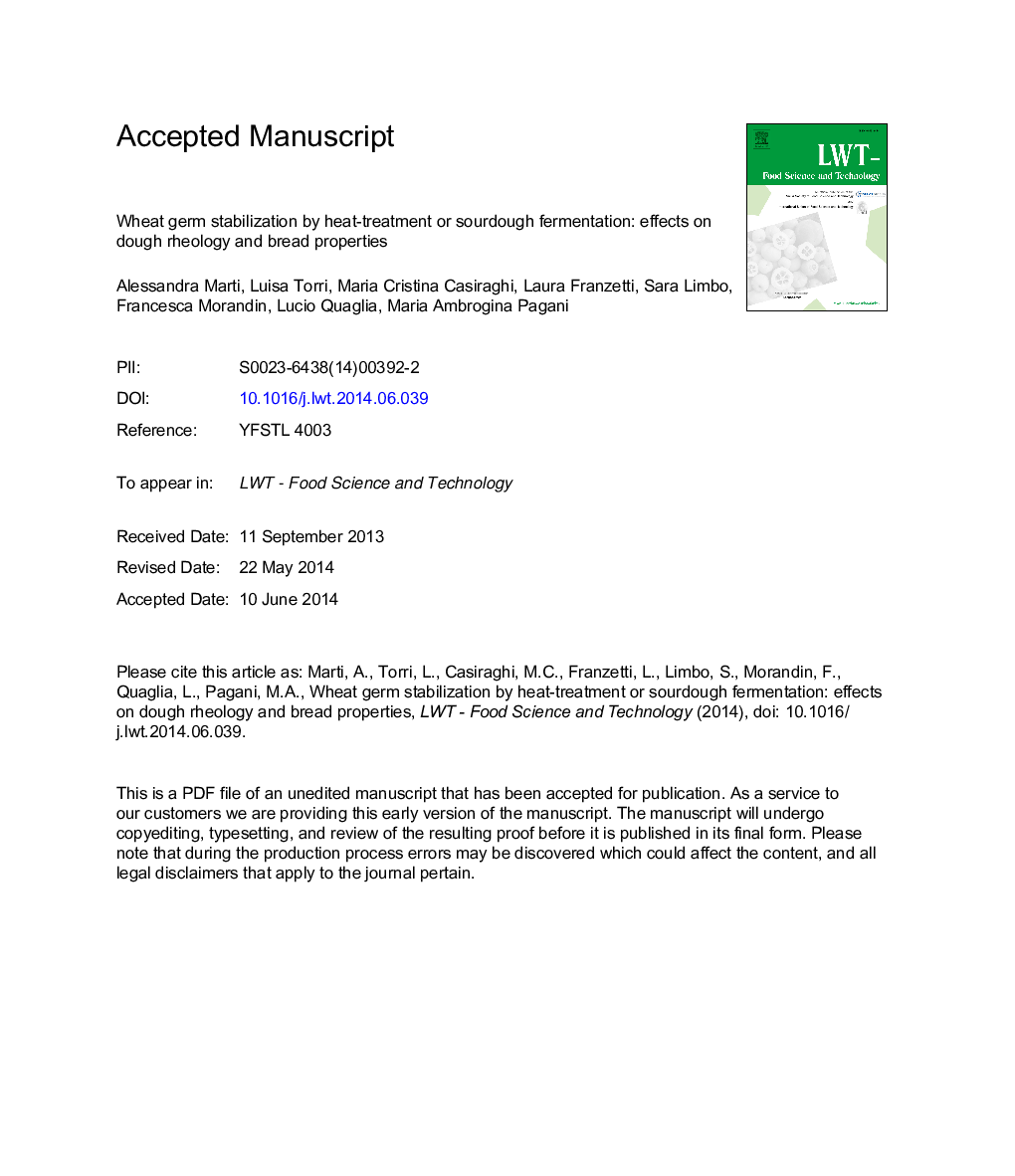| Article ID | Journal | Published Year | Pages | File Type |
|---|---|---|---|---|
| 6402701 | LWT - Food Science and Technology | 2014 | 31 Pages |
Abstract
The aim of this work was to evaluate the effects of wheat germ - stabilized by toasting or by sourdough fermentation - on dough and bread properties. Doughs were produced by adding increasing amounts of each type of stabilized germ, starting with the current recommended level of 3Â g/100Â g up to 20Â g/100Â g. Sourdough fermentation ensured the presence of lactic acid bacteria (LAB) in amounts comparable to those found in conventional sourdough. The acidification induced by LAB inactivates lipase and lipoxygenase, as does the toasting process. These results account for the decrease in rancidity, as demonstrated by the low development of hexanal during storage. Fermentation significantly decreased the content of glutathione, responsible for the deterioration of the rheological characteristics and workability of dough containing high levels of germ. Dough enriched with fermented germ exhibited high stability during mixing and development. Positive effects (high specific volume and low firmness) associated with the use of germ stabilized by fermentation have been detected both in fresh bread and in samples stored up to 4 days in controlled conditions of humidity and temperature. Finally, the sensory consumers' test confirmed that the addition of fermented germ did not diminish the liking of the sample.
Keywords
Related Topics
Life Sciences
Agricultural and Biological Sciences
Food Science
Authors
Alessandra Marti, Luisa Torri, Maria Cristina Casiraghi, Laura Franzetti, Sara Limbo, Francesca Morandin, Lucio Quaglia, Maria Ambrogina Pagani,
